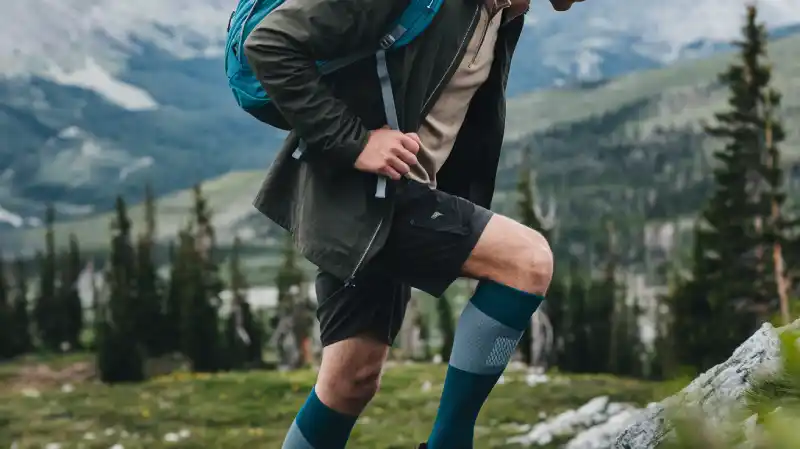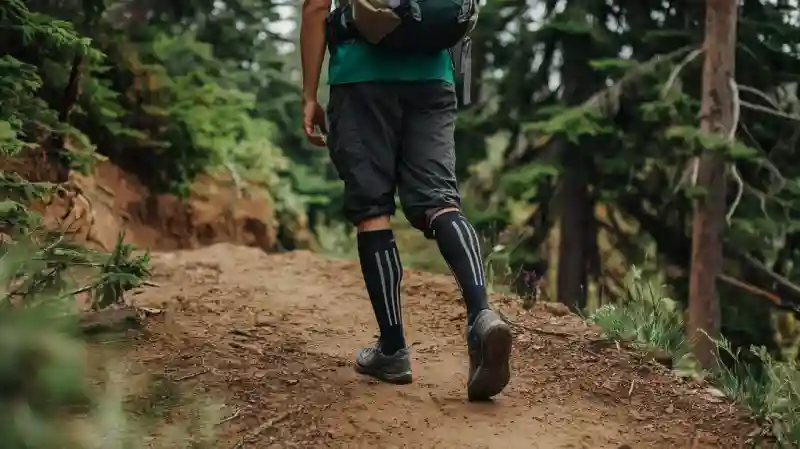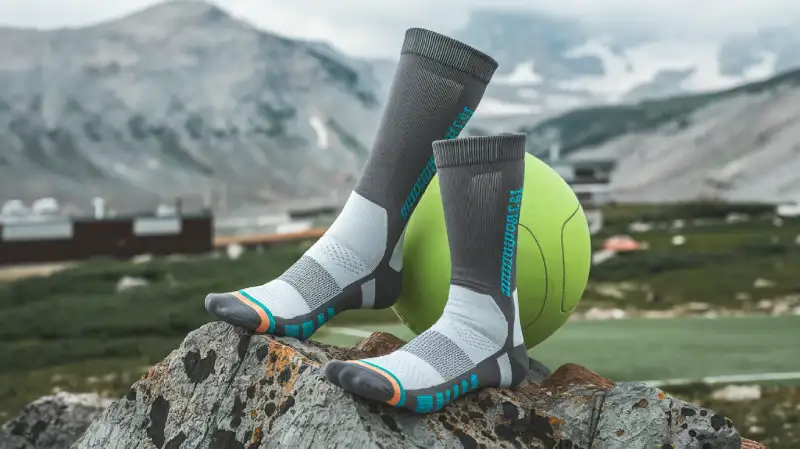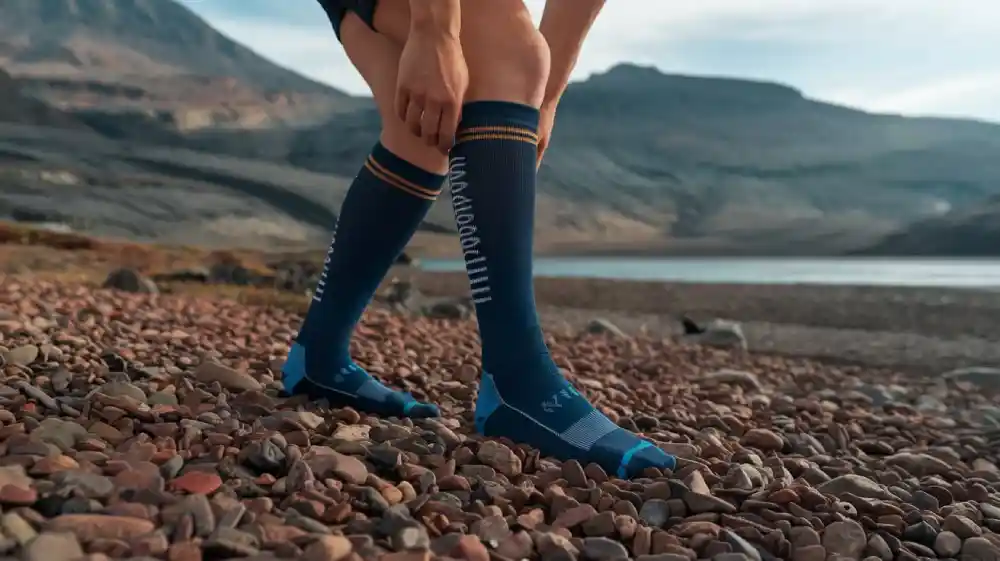
When it comes to hiking, few things are as essential as comfortable, well-supported gear. But did you know there’s one piece of equipment that’s quickly gaining traction in the hiking community for more than just comfort? Compression socks—once reserved for medical use—are now a must-have for outdoor enthusiasts seeking to push their limits on the trail. These socks, designed to improve circulation and reduce fatigue, are transforming the way hikers approach long treks and steep climbs. Whether you’re a seasoned adventurer or a weekend warrior, chances are you’ve experienced muscle soreness, swelling, or tired legs during or after a hike. Compression socks promise to address these common pain points, offering benefits that go far beyond just preventing blisters. In this post, we’ll dive into 5 powerful reasons why compression socks should be your next hiking essential, from boosting endurance to accelerating recovery. Ready to discover how these socks can elevate your hiking experience? Let’s take a closer look.
What Are Compression Socks and How Do They Work?
Compression socks are specially designed garments that offer targeted pressure to the legs, improving circulation and reducing discomfort. These socks are made from elastic materials that apply graduated pressure, meaning they are tighter around the ankle and gradually loosen as they move up the leg. This design supports the natural flow of blood from the feet and lower legs back to the heart, helping to prevent swelling and fatigue.
The pressure exerted by these socks plays a crucial role in their effectiveness. By squeezing the legs, they help veins push blood upwards, preventing blood from pooling in the lower extremities. This is particularly useful during long hikes, where standing or walking for hours on end can lead to swollen feet and tired legs.
Benefit 1&2&3 : Enhanced Circulation, Reduced Muscle Discomfort, and Faster Recovery
Compression socks offer multiple benefits for hikers, enhancing circulation, reducing muscle discomfort, and accelerating recovery after long hikes. These socks apply targeted pressure to the lower legs, promoting efficient blood flow from the feet and ankles back to the heart. Improved circulation helps deliver oxygen and nutrients to muscles, reducing fatigue and supporting endurance during hikes. Additionally, it aids in flushing out metabolic byproducts like lactic acid, which contributes to muscle soreness and stiffness.
After a challenging trek, swelling and tightness, particularly in the feet and ankles, are common issues. Compression socks help prevent fluid buildup and facilitate its movement away from the lower limbs, reducing swelling and discomfort. This process not only supports faster recovery but also speeds up the removal of metabolic waste, so hikers experience less soreness and can recover more quickly.
Studies and real-life feedback confirm the recovery-enhancing benefits of compression garments. Athletes and hikers who use compression socks report feeling less fatigued, with shorter recovery times and reduced muscle pain. By improving circulation and accelerating muscle repair, compression socks help you recover faster and return to the trail sooner, minimizing downtime between adventures.
For optimal results, wear compression socks for a few hours after your hike, or overnight. Whether you’re preparing for your next outing or recovering from a long trek, these socks make your hiking routine smoother, helping you enjoy each adventure to the fullest.

Benefit 4: Prevention of Common Hiking Injuries
Compression socks are highly effective in reducing the risk of common hiking injuries, particularly sprains and strains. During hikes, especially on uneven or rugged terrain, muscles and joints are under constant strain. The gentle pressure from these socks helps stabilize the legs, offering support to areas that are most vulnerable to injury. This added stability allows the muscles to move more efficiently, reducing the chances of overexertion or sudden movements that could lead to a sprain or strain.
The stabilizing effect of these socks is especially beneficial on challenging trails, where rough surfaces, steep inclines, and obstacles can place excessive stress on the legs. Compression helps support the calves and shins, ensuring that the muscles are more prepared for the physical demands of the hike. This is crucial for those navigating difficult terrain or carrying heavy packs, as the added support minimizes the risk of muscle fatigue and injury.
For hikers who suffer from issues like shin splints or calf cramps, compression socks provide extra relief. By applying pressure to the lower legs, they reduce muscle vibration, which is often a contributing factor to shin splints. Additionally, the improved circulation helps prevent muscle tightening, which can lead to cramps. Whether you’re dealing with chronic pain or just want to prevent discomfort, compression wear can be an invaluable tool in protecting your legs during long hikes.

Benefit 5: Comfort and Support for All-Day Wear
Compression socks offer incredible comfort and support for all-day wear, making them an essential part of any hiking kit. One of the standout features of these socks is the added cushioning, which helps reduce friction between the feet and shoes. This reduction in friction plays a significant role in preventing blisters, a common nuisance for hikers on long trails. The snug fit ensures that the socks stay in place, limiting the chance of rubbing and keeping the feet comfortable, even after hours of walking.
Another significant advantage is the moisture-wicking ability of compression socks. Made from advanced fabrics that actively pull moisture away from the skin, these socks keep your feet dry, preventing the discomfort caused by sweat buildup. Keeping your feet dry not only helps in maintaining comfort but also prevents issues like chafing and fungal infections, which can quickly ruin a hiking experience.
When selecting compression socks for hiking, look for features that will enhance overall comfort. Opt for seamless designs to avoid pressure points or irritation, and consider materials like merino wool or high-performance synthetics that provide breathability and moisture control. Additionally, choosing socks with a proper fit ensures that they offer the right amount of support without being too tight, ensuring both comfort and effectiveness throughout your hike. With these features, compression socks can help keep your feet feeling fresh and supported, allowing you to focus on enjoying the hike.

How to Choose the Right Compression Socks for Hiking?
When selecting the right compression socks for hiking, there are several factors to consider to ensure they provide the best support and comfort throughout your adventure. The key elements to focus on are compression level, material, and fit. Each of these influences how effective the socks will be in addressing your specific needs, such as improving circulation or preventing discomfort.
- Compression level
Compression level plays a pivotal role in how the socks will perform. For most hikers, moderate compression (15-20 mmHg) is ideal, offering a balance of support and comfort for extended wear. Mild compression (8-15 mmHg) is suitable for lighter activities, while higher compression (20-30 mmHg) may be needed for more intense needs, such as aiding recovery or addressing circulatory issues. It’s important to match the compression level with the level of physical activity and personal comfort.
- Material
Material is equally important for both comfort and performance. Look for fabrics that offer moisture-wicking properties, such as merino wool or synthetic blends like nylon and spandex. These materials keep your feet dry by drawing sweat away, preventing irritation and blisters. Merino wool is especially beneficial as it regulates temperature, making it suitable for all-weather conditions. Additionally, materials with a bit of stretch will ensure the socks fit snugly, offering support without restricting movement.
- Proper sizing
The fit of the socks is another essential factor. Compression socks should provide a firm yet comfortable fit that doesn’t interfere with circulation. A sock that’s too tight can cause discomfort and hinder blood flow, while one that’s too loose won’t provide the necessary support. Make sure the sock is snug around the ankle and gradually loosens as it moves up the calf. Proper sizing is also crucial, so be sure to measure your foot and calf to choose the correct size.

- Additional Features
Hiking-specific compression socks are designed to cater to the unique demands of outdoor activities. These socks often feature added padding in key areas, such as the footbed and arch, to provide extra comfort during long treks. They may also include reinforced zones to protect against wear and tear caused by rugged terrain. Regular compression socks, on the other hand, may lack these extra features and may not be as durable for long hikes or challenging trails.
- Consult Professional
Finally, when selecting compression socks, it’s important to exercise precaution if you have any underlying medical conditions. If you suffer from circulatory issues like varicose veins or blood clots, it’s essential to consult with a healthcare professional before wearing compression socks. Always ensure that the socks you choose are designed for active use, rather than medical or sedentary purposes, to guarantee they will support your hiking needs effectively. By paying attention to these factors, you can select the right compression socks to enhance your performance, comfort, and recovery on the trail.
Conclusion: Are Compression Socks Worth It for Your Next Hiking Adventure?
In conclusion, compression socks offer a variety of advantages that can make a noticeable difference on your hiking adventures. From enhancing circulation and endurance to reducing swelling and muscle soreness, these socks help address common issues faced during and after long treks. They also stabilize muscles and joints, lowering the risk of injuries, while ensuring comfort with reduced friction and moisture. Additionally, they speed up recovery time, allowing you to get back on the trail sooner with less discomfort.
For those who are serious about hiking, investing in compression socks is a wise decision. They not only improve performance during a hike but also support long-term foot health, making them a must-have in any hiking gear collection. Whether you’re tackling tough terrains, long distances, or seeking better recovery, compression socks are an essential addition to your kit.
If you haven’t already, consider trying them on your next hike. The boost in comfort, performance, and recovery could be the difference between a challenging hike and an enjoyable one. Give compression socks a try and see how they enhance your outdoor experience.
FAQs
Do compression socks help with sore feet after hiking?
Yes, compression socks can help alleviate sore feet after hiking. They work by improving circulation and reducing swelling in the feet and ankles, which helps to prevent discomfort and speed up recovery. The pressure also aids in reducing lactic acid buildup in muscles, which contributes to soreness.
How tight should compression socks be for hiking?
Compression socks should fit snugly but not be too tight. They should apply enough pressure to help with circulation without restricting blood flow. Generally, you want a moderate compression level (15-20 mmHg) for hiking, as it provides the right balance of support and comfort.
Can I wear compression socks all day while hiking?
Yes, you can wear compression socks all day while hiking. In fact, they’re designed for extended wear, offering comfort, support, and moisture-wicking properties. Just be sure to choose a pair with the right fit and compression level to avoid discomfort over long periods.
Are compression socks different from regular socks?
Yes, compression socks are different from regular socks. They are specifically designed with elastic materials that provide graduated pressure, meaning they are tighter around the ankles and gradually loosen as they go up the leg. This pressure helps improve circulation and reduce swelling, which regular socks do not do.
How do I choose the right compression socks for hiking?
When selecting compression socks for hiking, consider factors like compression level, material, and fit. For most hikers, a moderate compression level (15-20 mmHg) is ideal for support and comfort. Look for moisture-wicking, breathable fabrics like merino wool or synthetic blends, and ensure the socks fit snugly but comfortably without restricting circulation.
